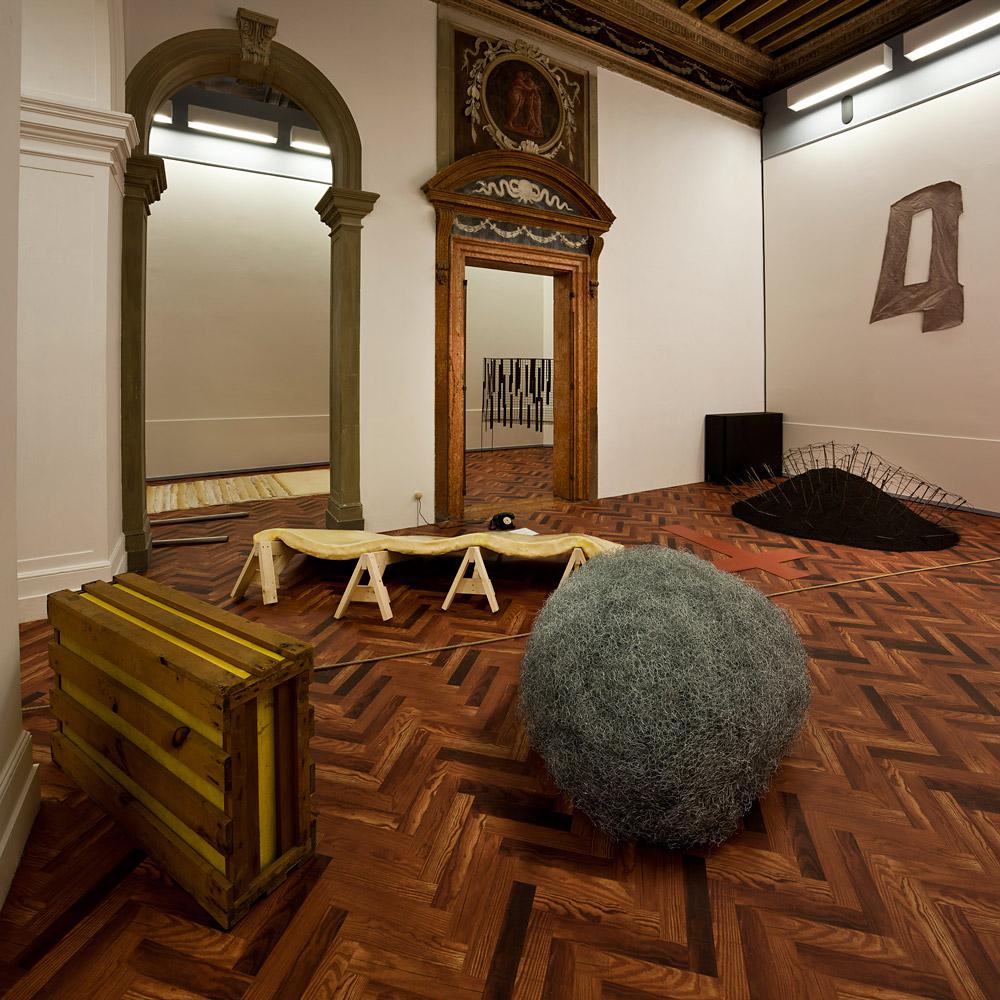While the history of exhibitions, as a field of scholarly and critical examination, has only been around in a serious way for the last decade, it has received a lot of attention—on the one hand through numerous publications, seminars, and conferences, and on the other hand through remakes, sequels and spinoffs of historically important exhibitions.
What options are there for a curator who wants to engage with past exhibitions? There are the traditional ways: they can consult the publications that were made, look at the archives of the exhibition, study responses to it such as reviews, look at installation images, and talk to the artists and the curators, if they are still around.
The exhibitions-about-exhibitions trend set a new bar this year in a full-scale, immaculately executed and highly sensitive restaging of what is arguably the most celebrated exhibition of the last 50 years, “When Attitudes Become Form,” originally organized by Harald Szeemann at Kunsthalle Bern in 1969. This massive undertaking by the Prada Foundation was organized by Germano Celant and is taking place at Prada’s Venice space, Ca’ Corner Della Regina, during the 2013 Venice Biennale.
I am not going to say much here about the original exhibition, since literally volumes have been written about it already, but I should point out for readers unfamiliar with the topic that Szeemann’s exhibition, while certainly important, has been mythologized to an extreme degree among curators and art historians. As someone interested in the history of exhibitions—exhibitions that conceptualize exhibition-making and its history, and exhibitions that are self-reflexive—I appreciate the restaging. I am personally invested in the emerging discourse around the history of exhibitions and have myself remade, restaged and otherwise revisited historically important exhibitions.
The reactions to Celant’s look back have been very mixed and extreme, from high praise to repulsion. Szeemann’s exhibition has already been examined from all angles; been the subject of countless curatorial studies seminars, books and essays; and even been the subject of an exhibition that declared itself a sequel. But it is time to do this remake, precisely because so many people have speculated over the years about what would happen if shows as iconic as Szeemann’s were restaged. It is time also because of the way the history of exhibitions as a field has developed. It is a necessary and inevitable experiment.
In a conversation I had with Celant after the opening (I contributed to the publication he made for the exhibition) he told me he was considering remakes of other important shows, but that he ultimately did not want become known at the “remake curator.” While there are a few shows that I would like to see re-tackled inside the gallery space (I am working myself on a large-scale spinoff of “Primary Structures: Younger American and British Sculptors” for the Jewish Museum in New York; it was first presented there in 1966), I hope it will not become a trend and that we will not see every museum remaking its own iconic exhibitions. The danger is not high, however, as there are only a handful of iconic exhibitions that have sufficient mass appeal.
I have found myself explaining to a good dozen or so people why I think the remake in Venice is so exciting to me and beneficial for the developing field of exhibition history. For one thing, the remake offers many of us a fascinating chance to see, at full scale, for the first time, how the works had been arranged in relationship to one another in 1969.
The place and time has a lot to do with the success of this show as well. It is in a palace right on the Grand Canal of Venice instead of a dusty kunsthalle in provincial Bern in the late 1960s. So, of course, the moments in history are very different: the age of revolution in the 1960s versus the age of indifference today. There was certainly a feeling of nostalgia looming over the place during the exhibition’s opening week, as many of the original artists—those who are still alive, anyway—visited and helped to install their works.
The process of organizing this show turned out to require quite a bit of fascinating detective work. Documentation of Szeemann’s show is not very good, and it has taken a lot of research to bring the remake together. Some commonly accepted information about what works were included, and where in the Kunsthalle Bern they were exhibited, have turned out (excitingly) to be simply wrong.
Celant decided to restage the show, with the help of artist Thomas Demand and architect Rem Koolhaas, exactly the way it was shown in Bern, because that was the way he had experienced it as a young curator during its opening days in 1969. Celant could have opted to just make it a 40-year-delayed fourth stop of the original tour of the exhibition (which travelled to Museum Haus Lange in Krefeld, Germany, and the Institute of Contemporary Arts in London) but instead he has restaged it precisely. How successful this decision is remains unclear: It does bring us into relative proximity with the original experience, but it also makes things feel a bit stiff and undynamic, I think, which is ironic given that Szeemann’s show has always been considered a radical break with the format of most sober institutional exhibitions at that time.
It seems very appropriate that Celant’s restaging is accompanied by a large publication with more than a dozen writers contributing on a wide variety of topics, from the original exhibition’s place in art history to comments on the many artists who participated; higher-level thoughts on the political and ethical dilemmas of remaking an exhibition; opinions about Harald Szeemann as the father of modern curating; and much more.
To read more of our Venice Biennale coverage, please visit canadianart.ca/venice2013.









